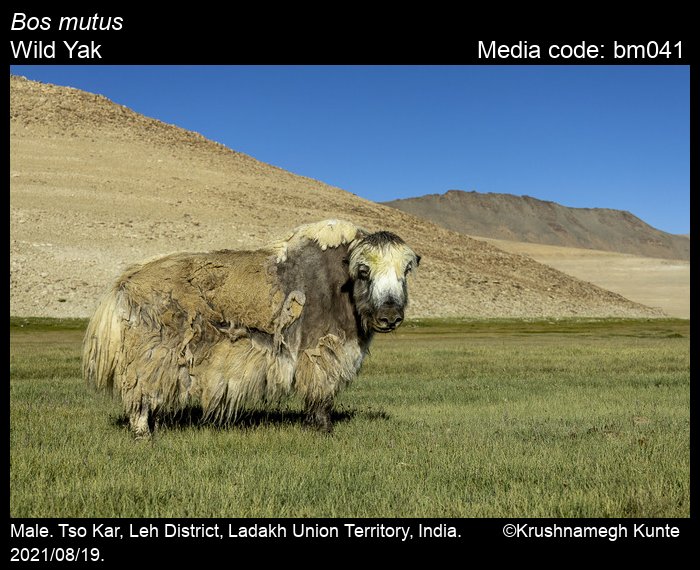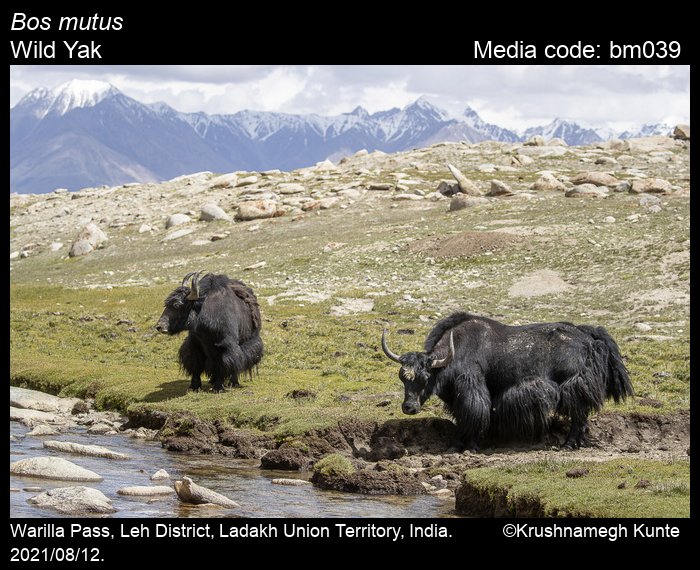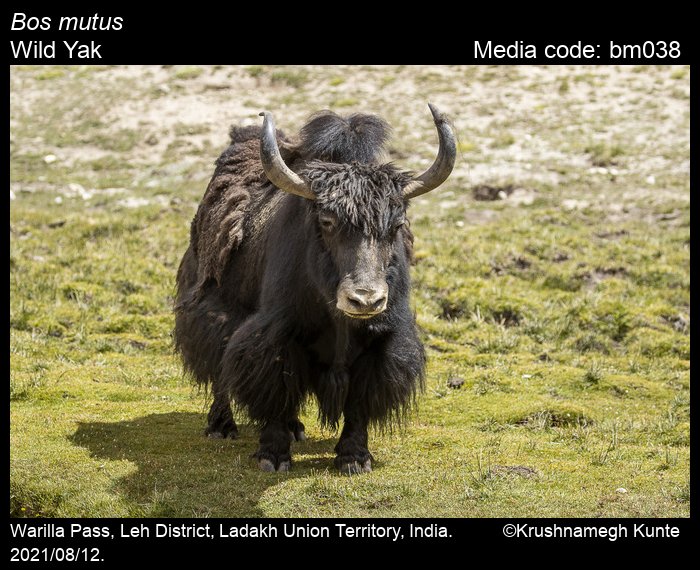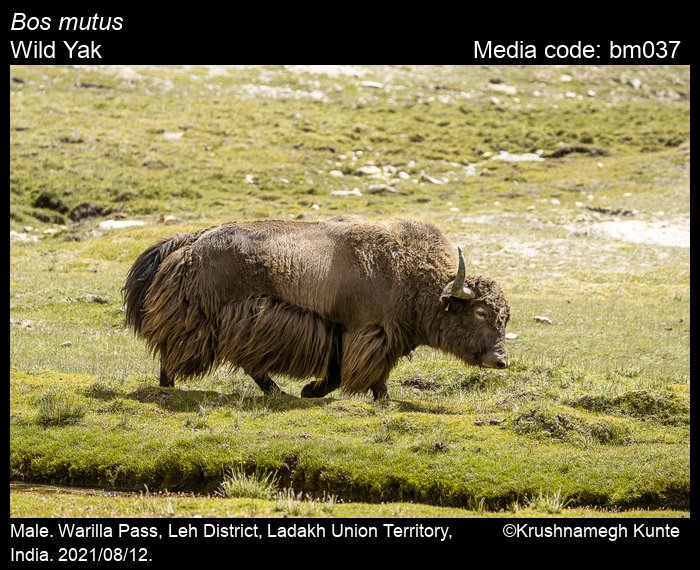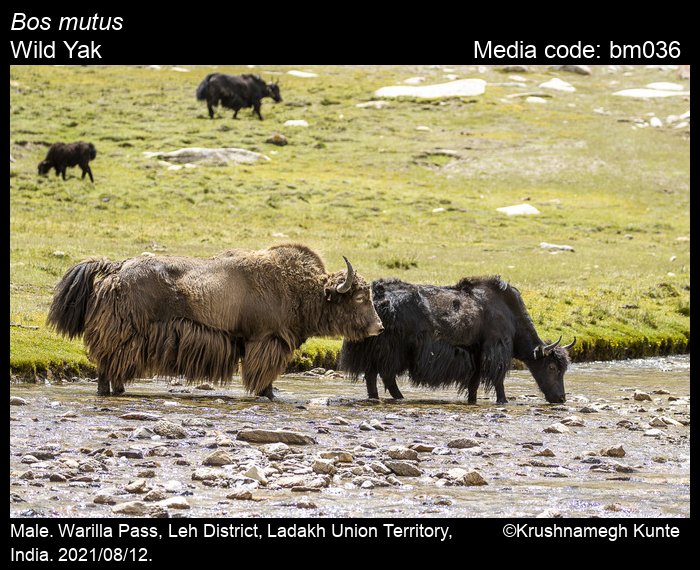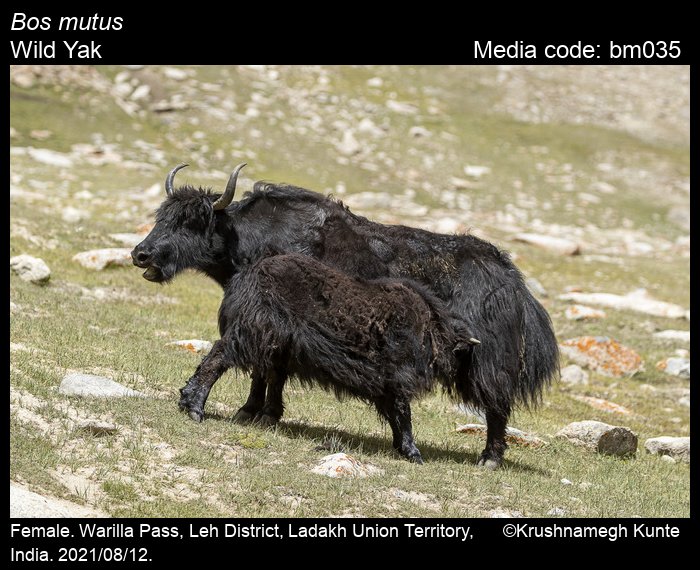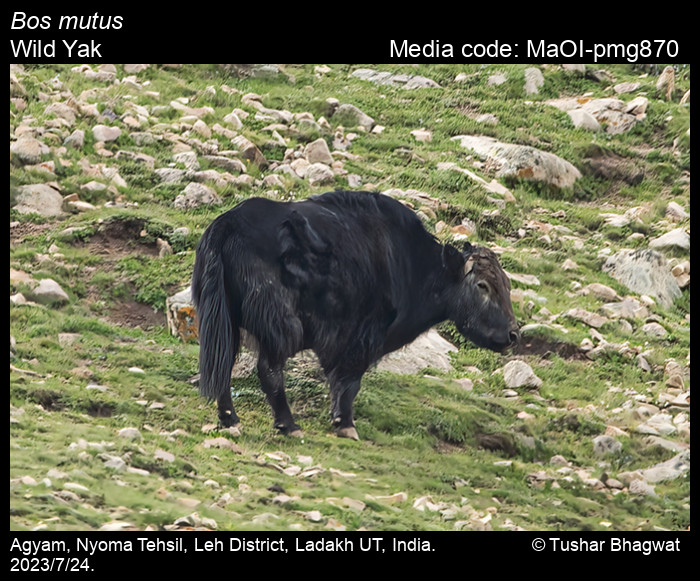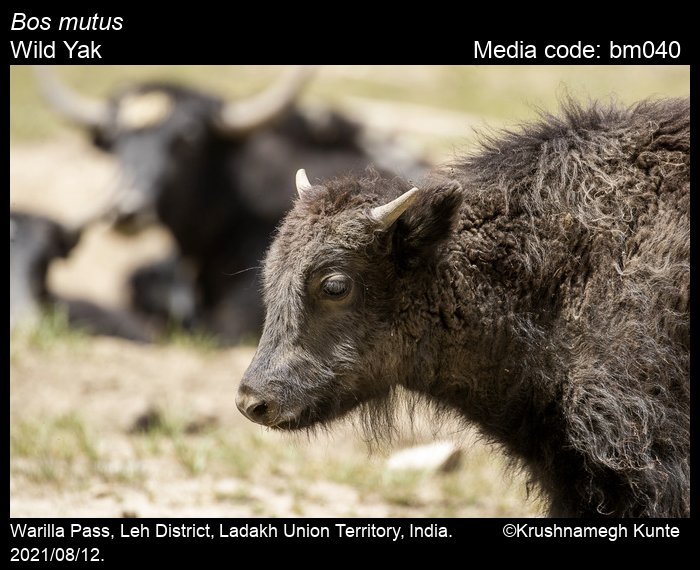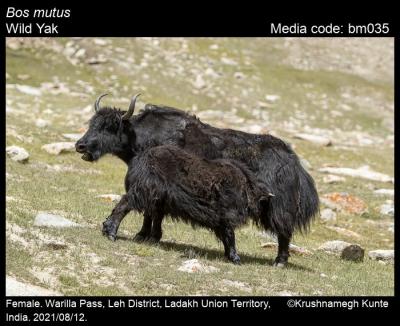
Subspecies in India
There are a few taxonomic disputes due to existence of a 'domesticated' variety/species of the same. While B. mutus is widely recognized as Wild Yak and B. grunniens as Domestic Yak, some authors consider B. mutus as subspcies of B. grunniens which is likely to be errenous and lacks enough support for the claim. ![]() This species is listed as Vulnerable in the IUCN Red List of Threatened Species (https://www.iucnredlist.org/).
This species is listed as Vulnerable in the IUCN Red List of Threatened Species (https://www.iucnredlist.org/).
Photo Gallery and Species Biology
Yak is one of the largest bovids in the world. This species is primarily distributed north to Tibet, but some subpopulations occur in Ladakh region of India. It was thought to be extinct from Nepal but was rediscovered in 2014. Once this widespread species inhabited plateaus at higher elevations, now exists as fragmented population in its much shrinked native range. Yak is a group living animal forming herds that may have up to 100 individuals having a sex ratio biased towards females. It inhabits alpine tundra and feeds mainly on grasses and sedges.
Conservation Status:![]() This species is listed as Vulnerable in the IUCN Red List of Threatened Species (https://www.iucnredlist.org/).
This species is listed as Vulnerable in the IUCN Red List of Threatened Species (https://www.iucnredlist.org/).
According to IUCN Red List assessment, population of this species is decreasing all over its range. Its global population is estimated to be between 7500 and 9999 mature individuals. Major threats to its survival come from habitat loss due to various anthropogenic activities. Loss of grazing patchs due to overgrazing by livestock and hunting has caused serious damage to its population all over the range.
| State | Jan | Feb | Mar | Apr | May | Jun | Jul | Aug | Sep | Oct | Nov | Dec | No date |
|---|---|---|---|---|---|---|---|---|---|---|---|---|---|
| Andaman and Nicobar Islands | |||||||||||||
| Andhra Pradesh | |||||||||||||
| Arunachal Pradesh | |||||||||||||
| Assam | |||||||||||||
| Bihar | |||||||||||||
| Chandigarh | |||||||||||||
| Chhattisgarh | |||||||||||||
| Dadra & Nagar Haveli | |||||||||||||
| Daman & Diu | |||||||||||||
| Delhi | |||||||||||||
| Goa | |||||||||||||
| Gujarat | |||||||||||||
| Haryana | |||||||||||||
| Himachal Pradesh | |||||||||||||
| Jammu and Kashmir UT | |||||||||||||
| Jharkhand | |||||||||||||
| Karnataka | |||||||||||||
| Kerala | |||||||||||||
| Ladakh UT | 1 | ||||||||||||
| Lakshadweep | |||||||||||||
| Madhya Pradesh | |||||||||||||
| Maharashtra | |||||||||||||
| Manipur | |||||||||||||
| Meghalaya | |||||||||||||
| Mizoram | |||||||||||||
| Nagaland | |||||||||||||
| Odisha | |||||||||||||
| Paschimbanga | |||||||||||||
| Pondicherry | |||||||||||||
| Punjab | |||||||||||||
| Rajasthan | |||||||||||||
| Sikkim | |||||||||||||
| Tamil Nadu | |||||||||||||
| Tripura | |||||||||||||
| Uttar Pradesh | |||||||||||||
| Uttarakhand | |||||||||||||
| West Bengal | |||||||||||||
| Total | 1 |
Page citation
Anonymous 2025. Bos mutus Przewalski, 1883 – Wild Yak. In Bayani, A., R. Chakravarty, and K. Kunte (Editors) (Chief Editors). Butterflies of India, v. 1.13. Published by the Indian Foundation for Butterflies. URL: https://www.mammalsofindia.org/bos-mutus, accessed 2025/11/02.
